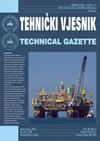Universal Model for the Quality Analysis of Aluminium Alloys Castings
IF 1.4
4区 工程技术
Q3 ENGINEERING, MULTIDISCIPLINARY
引用次数: 0
Abstract
: The production of products in foundry technology is fraught with many problems, including the impossibility of controlling all parameters affecting casting quality. It is important to take effective improvement measures related to the implication of non-destructive testing (NDT), but these methods are rarely combined in the diagnostic cycle. As part of quality assurance, it is also important to identify the root causes of problems. In view of this, it is appropriate to develop a model that facilitates diagnosis and the search for the key causes of nonconformity, which would be a combination of NDT and quality management methods. The originality of the model presented in the study is reflected in the combination of NDT and quality management methods. The model presents a universal method that can be implemented in foundries to ensure the stability of production processes. The application of the model brings tangible benefits in the form of an increase in the speed of detection and a reduction in non-conformities in aluminium castings, which significantly increases the quality level of the products offered. Further research directions will address the application of the model within foundry processes characterised by loss of quality stability.铝合金铸件质量分析的通用模型
当前铸造技术中产品的生产存在许多问题,包括不可能控制影响铸造质量的所有参数。采取与无损检测(NDT)含义相关的有效改进措施很重要,但这些方法很少在诊断周期中结合使用。作为质量保证的一部分,确定问题的根本原因也很重要。鉴于此,建立一种便于诊断和查找不符合关键原因的模型是合适的,该模型将无损检测与质量管理方法相结合。本研究模型的独创性体现在无损检测与质量管理方法的结合上。该模型提供了一种通用的方法,可以在铸造厂实施,以确保生产过程的稳定性。该模型的应用带来了实实在在的好处,提高了检测速度,减少了铝铸件的不合格率,大大提高了所提供产品的质量水平。进一步的研究方向将解决该模型在铸造过程中的应用,其特点是质量稳定性的损失。
本文章由计算机程序翻译,如有差异,请以英文原文为准。
求助全文
约1分钟内获得全文
求助全文
来源期刊

Tehnicki Vjesnik-Technical Gazette
ENGINEERING, MULTIDISCIPLINARY-
CiteScore
1.90
自引率
11.10%
发文量
270
审稿时长
12.6 months
期刊介绍:
The journal TEHNIČKI VJESNIK - TECHNICAL GAZETTE publishes scientific and professional papers in the area of technical sciences (mostly from mechanical, electrical and civil engineering, and also from their boundary areas).
All articles have undergone peer review and upon acceptance are permanently free of all restrictions on access, for everyone to read and download.
For all articles authors will be asked to pay a publication fee prior to the article appearing in the journal. However, this fee only to be paid after the article has been positively reviewed and accepted for publishing. All details can be seen at http://www.tehnicki-vjesnik.com/web/public/page
First year of publication: 1994
Frequency (annually): 6
 求助内容:
求助内容: 应助结果提醒方式:
应助结果提醒方式:


